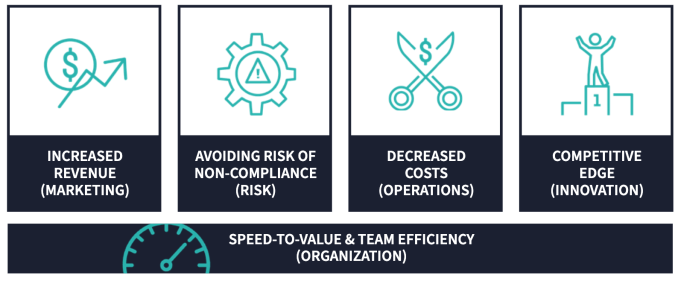By Florian Douetteau, Dataiku
Enterprise AI (and today’s data culture at large) has a lot of associated buzzwords and hype, but what does it actually mean for an organization in practice? Is it as grandiose as it is made out to be? Will teams fail without exceptional ambition and talent or unlimited resources?
Believe it or not, the answer is no. In order to be successful, companies need to integrate data and AI organically throughout the organization, systematizing its use at scale to unlock individual creativity. By making the use of AI an everyday behavior (elevating the people using it with the ability to make better decisions), organizations will be equipped to accomplish the complete spectrum of AI use cases, from the mundane to the moonshots.
Whether an organization is working on optimizing processes (i.e., automating monthly business reporting) or more advanced machine learning applications (i.e., complex modeling that could, if executed with the right approach, generate millions in incremental revenue), AI can’t be put on a pedestal as this flashy solution that will alter a business’s trajectory overnight. It’s not a magical fix that will change everything about a business. Rather, it’s a powerful tool that can optimize every single process, but it has to be embedded into the organization’s operating model in order to actually make an impact.
At Dataiku, we’ve seen many businesses struggle to jumpstart their enterprise AI journey over the years and we’ve also seen some that have thrived. The companies that succeed are the ones that go beyond leveraging AI for one specific project or ad-hoc use case and instead focus on scaling it out to a level that will sustain the business in the future.
Demystifying enterprise AI
As mentioned, data and AI are mostly about optimizing each individual business process that a company does, in order to make them more efficient and, ultimately, create more value. There are hundreds (or even thousands) of business processes going on at any one time, so it’s safe to say it’s not a turnkey process, but rather one that takes time and requires the careful alignment of people, processes, and technology.
For example, financial companies might want to optimize their cash management processes, a marketing department might want to work on targeting their customers using data segmentation, and healthcare companies might want to use AI to ease the choke points in their documentation workflows. While optimizing these things individually may seem mundane, in aggregate they create tremendous value.
Let’s look at an example of sales forecasting for a finance team. If what previously took 10 financial analysts weeks to complete manually now takes one analyst just a few days or even hours, the ROI comes from the efficiency across the end-to-end data lifecycle. Now, the business has nine analysts that can focus on other high-value projects — a win for both the company (increased speed to value and now they can start on innovative projects that are either net new or they never got to previously) and the analysts themselves (increased team efficiency).
While these benefits are often cornerstone, there are a myriad of other use cases that can generate value in the forms of increased revenue, reduced churn, mitigated risk, decreased operational costs, and enhanced innovation, to name a few.

Image Credits: (opens in a new window)
To truly realize AI at scale, it comes down to the notion that organizational transformation is worth more than the sum of your use cases. Real value comes from what is achieved beyond specific use cases, the mundane ones that are evident upfront in order to gain executive buy-in (such as a retail company using AI to improve personalized marketing ads on their website or a financial institution taking a smarter approach to fraud detection). These mundane use cases are certainly not unimportant, because they act as proof points for something bigger that the organization wants to achieve. If successful, this will completely change the future conversations with stakeholders, elevating the organization out of a purely “per use case” discussion and into broader business cases that are likely loftier and more radical — the moonshots, if you will.
So, let’s put all of this in perspective. While some organizations have grasped and implemented robust analytics and AI programs because they figured out the blueprint to getting everyone involved, others have been left scrambling to figure out how to realize the full potential from these technologies. They don’t know how to integrate data and AI organically throughout the organization, data talent is increasingly hard to find and expensive to hire and retain, and there are typically no governance capabilities at an organizational and individual level.
By pulling back the curtain and making the use of data and AI an everyday behavior, these organizations effectively empower their employees to use it — enabling them to make better decisions, transforming their work on everyday AI into extraordinary results. By allowing everyone to imagine, execute, control, and have governance over their work (like Dataiku’s all-in-one platform), data and AI become business assets that propel the company forward. By unlocking individual creativity and giving everyone a seat at the table, organizations can generate exceptional business results from AI, whether they are solving the mundane or undertaking moonshots.